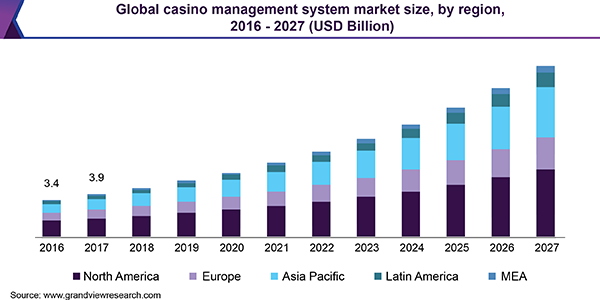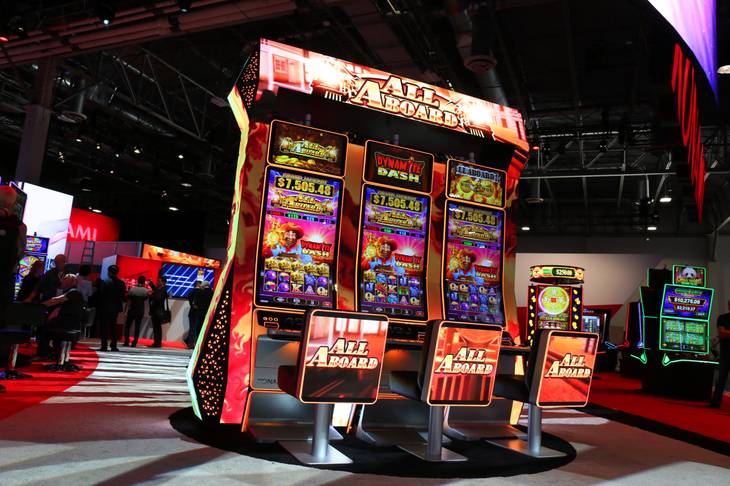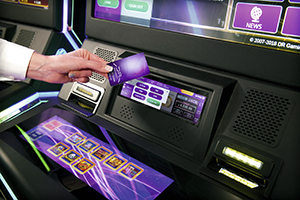Casino Player Tracking Systems
Touch Screen for use in IGT NexGen Player Tracking System. Part Number: 91-1058-01. Power Supply for Acres Player Tracking System. Part Number: 70-25426-00. Cold Cathode With Wiring Harness for IGT Nexgen Player Tracking System. With casino player card printer and tracking systems from IdentiSys, your player registration and card program can include: Improved speed of processing patrons through the enrollment process Check of. Kai ™ collects live data from Foundation™ or your legacy player tracking system. When a service or interaction is needed, Kai ™ directs the nearest, most qualified employee where to go, who to see,. The CasinoTrac casino management system by Table Trac, Inc. Delivers comprehensive insights to your business ranging from accounting and revenue audits to Players Club and promotions. Now processing millions of transactions daily at over 150 casinos worldwide, it provides full functionality on all levels of casino operations.
UltraLinx offers the standard player tracking features found in more expensive systems, including player registration, point accumulation, and point redemption. Operators can use their player tracking database to market directly to players and provide incentives that drive return play. Additionally, operators can use the UltraLinx in-machine video display to provide in-house advertising which.
UltraLinx offers the standard player tracking features found in more expensive systems, including player registration, point accumulation, and point redemption. Operators can use their player tracking database to market directly to players and provide incentives that drive return play.
Additionally, operators can use the UltraLinx in-machine video display to provide in-house advertising which will make players aware of the full suite of amenities and promotions that your property offers. UltraLinx gives you, the operator, the power to design promotions and incentives that will help you drive return play, increasing your bottom line.
Schedule a Demo
1. Field of the Invention
The present invention relates to a tracking system for tracking players at a gaming table, and more particularly, to an automated player tracking system that provides a dealer with player information at player positions at the gaming table.
2. Description of the Prior Art
In the ever increasing competition among casinos to attract and retain players' loyalty, casinos generally award them with complimentary services and merchandise, which are generally referred to as “comps.” Comps are similar to frequent flyer miles and are generally earned on the basis of the amount of money wagered by the player. Generally, comps are calculated on the basis of the theoretical win for the casino (or loss for the player), which in turn depends on the odds of the game and how much was wagered by the player. The theoretical win is generally fairly easy to calculate for slot machines due to their automation and ability to count each coin that is inserted and dispersed.
With table games, it is more difficult to calculate the theoretical win because bets change hands instead of being inserted into coin slots. Thus, in order to keep exact track of a player's gambling at table games, one has to capture the size of each bet and the frequency of the bets, or the number of bets per unit of time. This is typically too burdensome for casinos to do and therefore, casinos generally estimate a player's bets on the basis of the lower table betting limit and then adjusting the player's bets if the player regularly bets more, along with the speed of the game, (number of games per hour, for example). The theoretical win is then calculated on the basis of the approximate amount bet by the player and the odds for the game.
Comps have become a big point of attraction for casinos and, among other things, generally include the “free” luxury suites and similar “perks” casinos generally offer their “high roller” customers, to more mundane rewards such as free meals, merchandise, etc. offered to others. One player who walks away with a large win (resulting with a corresponding high loss to the casino) will receive the same comps as another player who incurs a loss (resulting in a win for the casino) where the two players play the same game and wager the same amount of money. Comps are often provided to players who win large amounts of money in order to entice them to remain at the casino in order to provide the casino with opportunities to win back some or all of the winnings.
Lately, major casinos including those with multiple properties, tend to issue a card to each player. This card typically has a magnetic strip that carries an ID or account number for the player as well as other relevant information. On slot machines, the player generally inserts his card into a reader attached to or incorporated in the machine and thus, all coins dropped by the player are credited to his account from which the theoretical win of the casino is calculated and then credited to the player's account at a central computer. Recently, large casinos have begun to implement multi-property wide systems where a player's gaming activity in any properties of the casinos is tracked and stored in a central account that is accessible from all casino properties.
In order to encourage players at gaming tables to remain at the table and gamble, dealers are often encouraged to strike up conversations with the players and generally be friendly with the players. This helps players feel comfortable and increases the amount of fun the players have at the table. Thus, it is beneficial for the dealers to know as much about the players on a personal level as possible in order to allow them to more easily engage in conversation with the players.
A system for tracking play at a gaming table that includes a plurality of player positions, in accordance with the present invention, includes a computer database and a single card reader adjacent a dealer position at the gaming table. The card reader is coupled to the computer database with a communication channel. A display monitor adjacent the dealer position at the table is provided that is coupled with the computer database with a communication channel and is configured to depict player positions at the gaming table. An input is coupled to the display monitor for associating a card read by the card reader with a respective player position at the table. The respective player position that is depicted by the display monitor indicates a player associated with the card read by the card reader at the respective player position.
In accordance with one aspect of the present invention, the system is configured such that the display monitor displays information associated with a player at a respective player position, either upon request or automatically.

The present invention provides a method of tracking players at gaming table that includes a plurality of player positions that include receiving a card from a player at one of the player positions, reading player information from the card with a card reader adjacent a dealer position, depicting player positions on a display adjacent the dealer position, and inputting a respective player position on the display associated with the card and the player thus indicating at which player position the player is located.
Accordingly, the present invention allows a dealer to input information from a card from a player and correlate the information contained on the card and read by the card reader with a player position. By observing a display monitor, the dealer can keep track of which players are at which player positions, and engage them in conversation by their names. This can provide a more congenial and fun atmosphere for the players, thereby encouraging them to remain at the gaming table and continue to wager money.
Furthermore, a system and method in accordance with the present invention, allows dealers and pit bosses to obtain and update information regarding players and their playing and wagering habits.
Other features and advantages of the present invention will be understood upon reading and understanding the detailed description of the preferred exemplary embodiments, found hereinbelow, in conjunction with reference to the drawings, in which like numerals represent like elements.
Casino Player Tracking Systems Questions
A blackjack gaming table
A typical blackjack table generally includes seven player positions
The card reader is coupled to a central computer
The system further includes a display monitor

Player Tracking System
Additionally, the system may include other input devices (not shown) such as, for example, a keyboard, a mouse, and a microphone.
In a preferred embodiment, operation of the system begins with a sign-in process. When first opening a game, a shift supervisor, or other authorized personnel, activates the system, preferably by touching the screen of the display monitor, thus turning off any screen saver present in the system. Preferably, a list of supervisors appears on the screen, as illustrated in

After the card has been read by the card reader, the dealer inputs into the system the player position at the gaming table. As noted previously, preferably display monitor
Preferably, central computer
Preferably, the system allows for the supervisor to enter information any time a player buys-in for his initial playing chips or whenever the player buys-in for more playing chips. Additionally, the system preferably allows the supervisor to enter the amount of chips in front of the player at various stages of the time the player spends at the playing table. Also, information is preferably input relating to the player's average bet.
As noted in
When a player is finished playing and wishes to leave, a “check-out” operation is preferably performed. During the check-out procedure, the supervisor preferably verifies the average bet, the speed of play, total money in, total money out and “checks,” which are chips located in the player's “shoe” on the table, i.e., chips the player has but is not betting. Preferably, the supervisor, upon verification of the information, presses the appropriate key, which in a preferred embodiment is indicated by “closed rating”
Casino Player Tracking Systems
In a preferred embodiment, by pressing a “no rating” key
A screen similar to that which is illustrated in
Soccer Player Tracking System

Igt Player Tracking System
Although the invention has been described with reference to specific exemplary embodiments, it will be appreciated that it is intended to cover all modifications and equivalents within the scope of the appended claims.